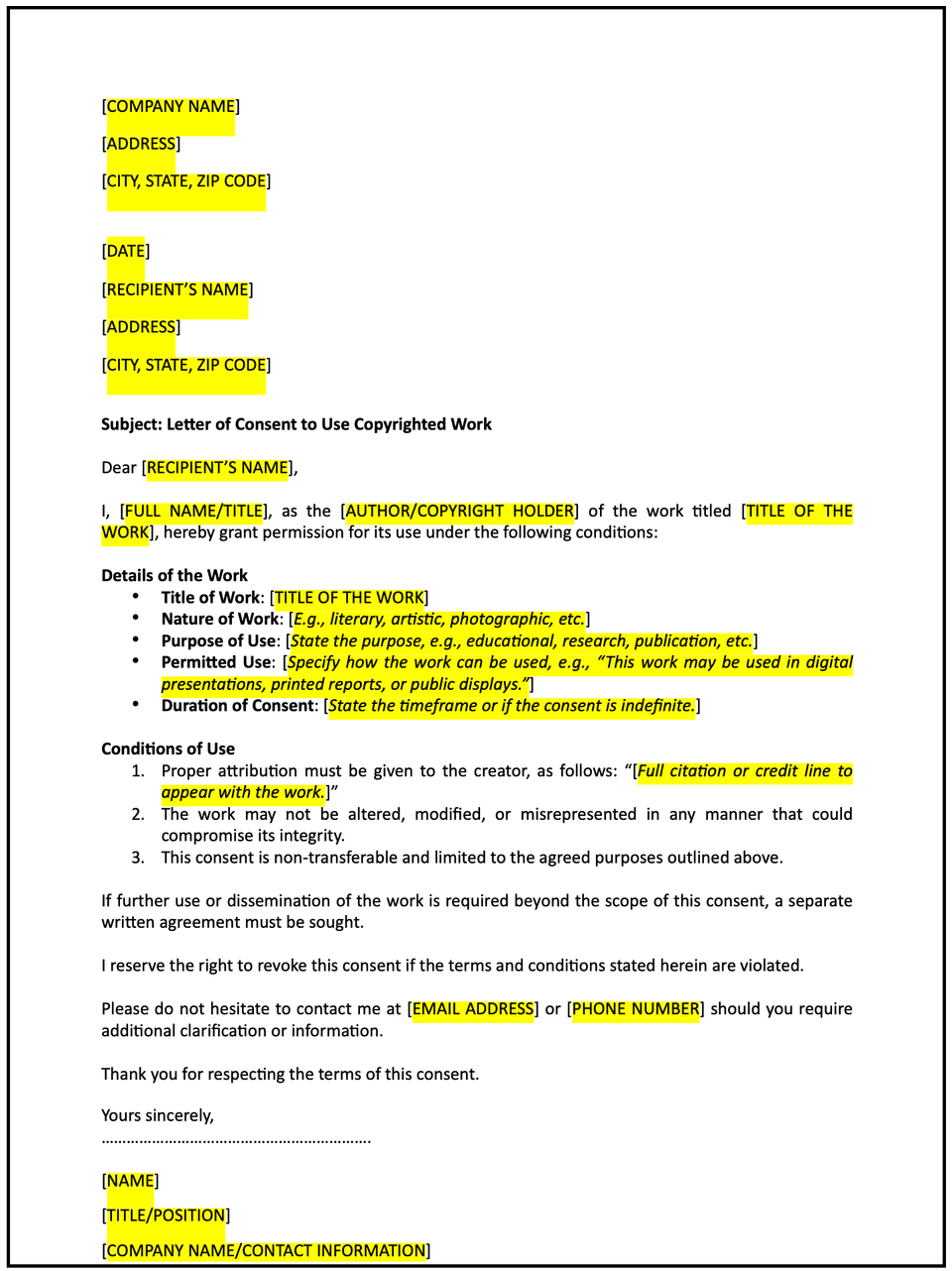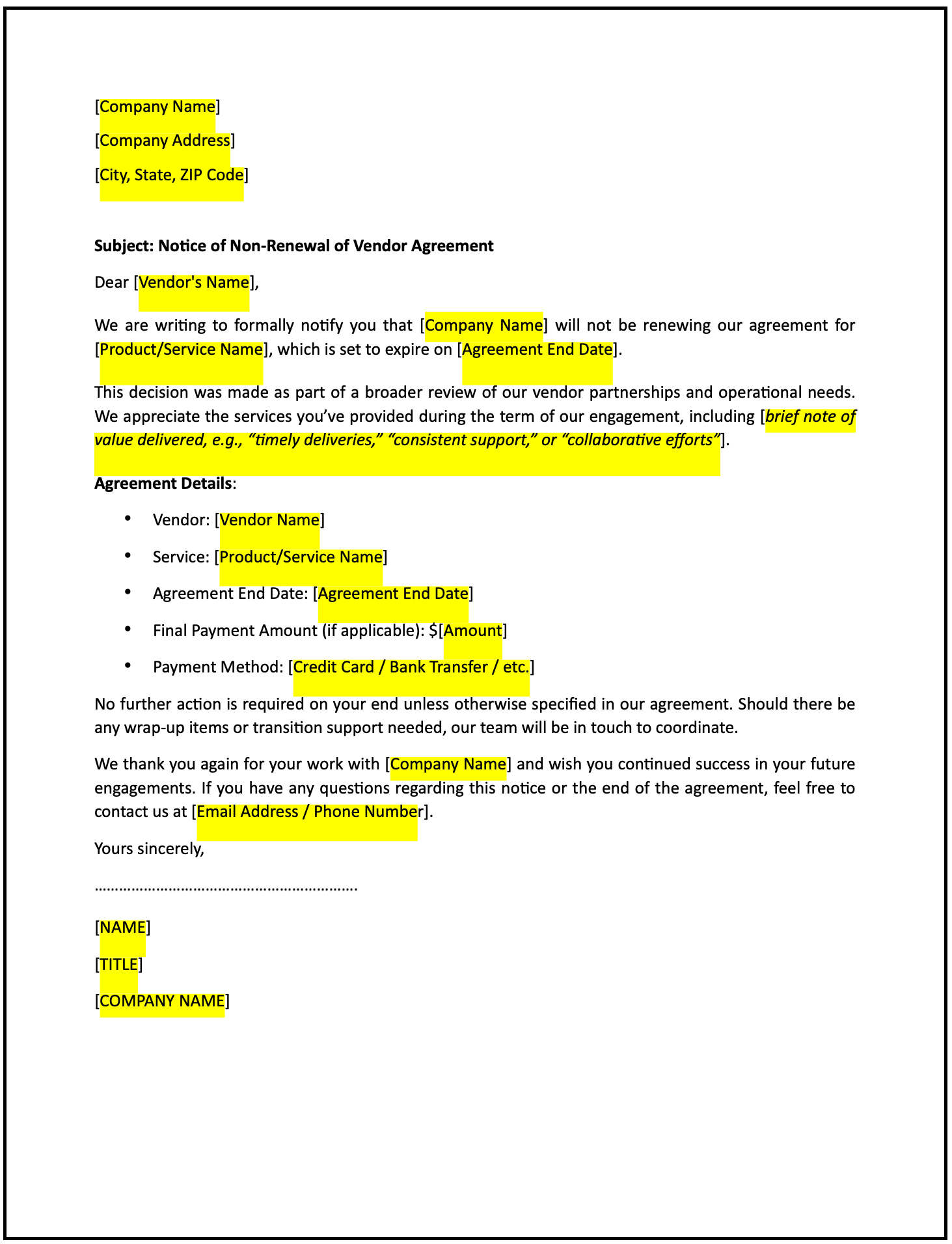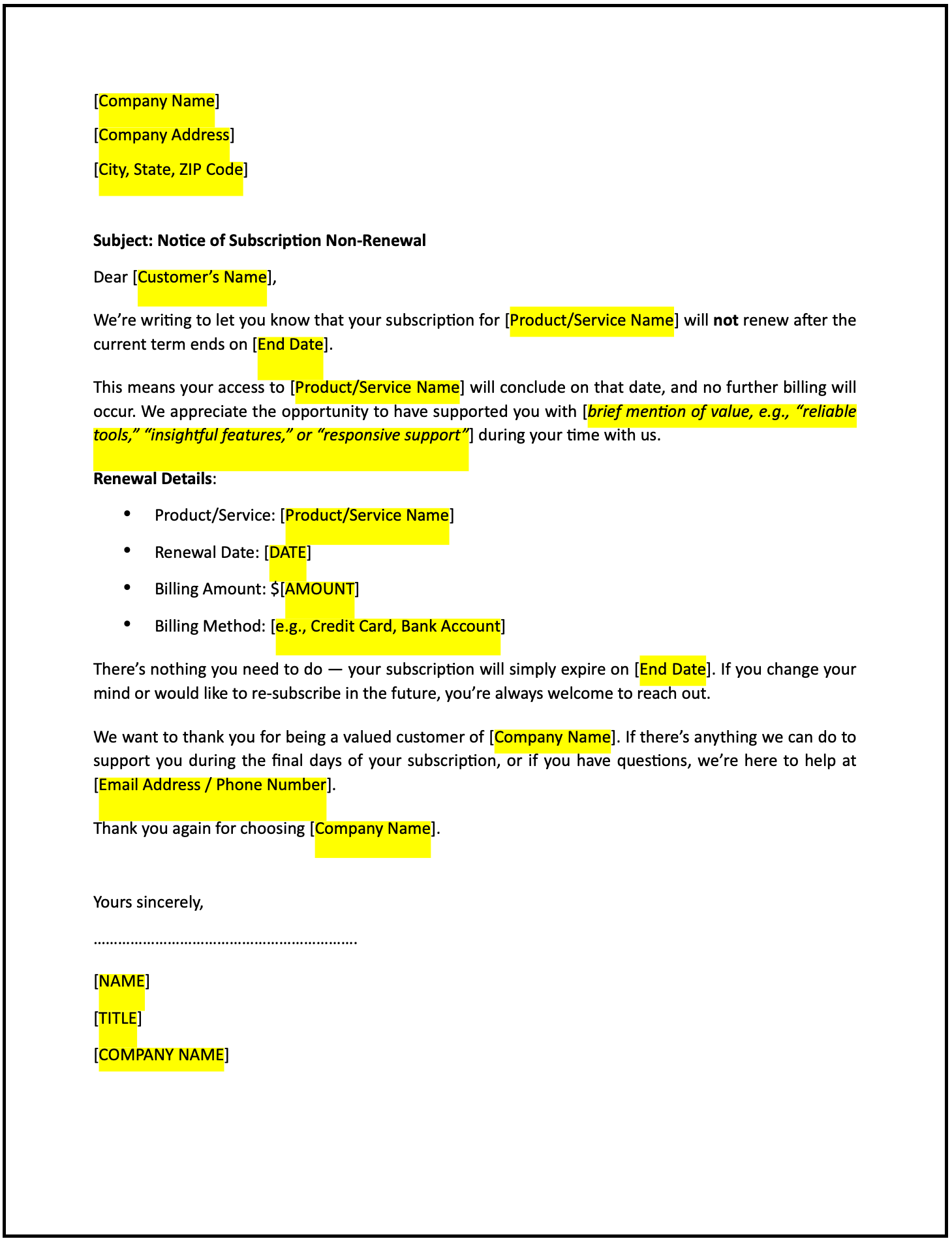Letter of consent to use a copyrighted work: Free template

Letter of consent to use a copyrighted work
A letter of consent to use a copyrighted work is a formal communication granting permission to another party to use a specific copyrighted material under defined terms. This letter outlines the scope of permitted use, any restrictions or conditions, and serves as a record of the agreement.
How to use this letter of consent to use a copyrighted work
- Open with an introduction: Address the recipient respectfully and state the purpose of the letter.
- Identify the copyrighted work: Clearly describe the material being referenced, including its title, creator, and any relevant details.
- State the consent: Explicitly grant permission to use the work and define the scope of use, such as for a specific project, timeframe, or audience.
- Include terms and conditions: Specify any restrictions, such as prohibiting sublicensing, alterations, or use beyond the agreed purpose.
- Reference ownership: Reaffirm that the copyright owner retains all rights not expressly granted in the consent.
- Request acknowledgment: Ask the recipient to confirm their understanding and acceptance of the terms in writing.
- Provide contact information: Include details for the recipient to address any questions or clarifications.
- Maintain a professional tone: Ensure the letter is clear, respectful, and focused on fostering trust and compliance.
Benefits of using a letter of consent to use a copyrighted work
This letter ensures a structured and professional way to grant permission while protecting intellectual property rights. Here's how it helps:
- Promotes clarity: Clearly outlining terms and scope prevents misunderstandings.
- Reflects professionalism: A well-crafted letter demonstrates respect and attention to legal obligations.
- Encourages accountability: Stating conditions ensures the recipient adheres to agreed terms.
- Builds trust: Transparent communication strengthens the relationship between parties.
- Supports legal compliance: Providing written consent protects both parties from potential disputes.
Tips for writing an effective letter of consent to use a copyrighted work
- Be specific: Clearly identify the copyrighted work and the scope of the permitted use.
- Use professional language: Maintain a respectful and constructive tone to foster trust.
- Provide context: Briefly explain the purpose of granting consent and how the work may be used.
- Highlight ownership: Emphasize that the copyright owner retains all rights not granted in the consent.
- Include actionable steps: Share instructions for the recipient to confirm acceptance or address questions.
- Keep it concise: Focus on the essential points while ensuring the tone is professional and engaging.
Frequently asked questions (FAQs)
Q: What details should I include in this letter?
A: Include a description of the copyrighted work, the scope of permission, and any terms or conditions.
Q: Should I personalize the letter?
A: Yes, addressing the recipient by name and referencing the specific request demonstrates attentiveness and professionalism.
Q: Who typically sends this letter?
A: Copyright owners, legal teams, or authorized representatives typically send this letter.
Q: How formal should this letter be?
A: The tone should be professional, respectful, and focused on fostering trust and compliance.
Q: When should this letter be sent?
A: Send the letter promptly after deciding to grant consent to ensure clarity and agreement.
Q: Can this letter include limitations on use?
A: Yes, specifying limitations ensures the work is used appropriately and within agreed boundaries.
Q: Is acknowledgment from the recipient required?
A: Yes, requesting acknowledgment ensures the recipient understands and agrees to the terms.
This article contains general legal information and does not contain legal advice. Cobrief is not a law firm or a substitute for an attorney or law firm. The law is complex and changes often. For legal advice, please ask a lawyer.


